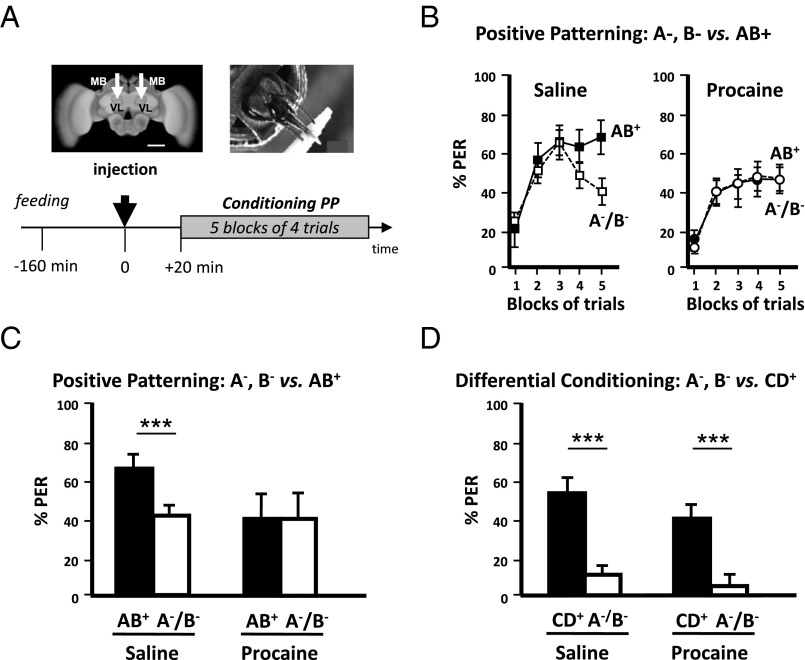Fig. 1.
Mushroom body blockade impairs positive patterning (PP). (A, Upper Left) Frontal view of a honey bee brain. MB, mushroom body; VL, vertical lobe. The white arrows indicate the sites (VL) of bilateral injections of the anesthetic procaine (or saline solution for control bees). (Scale bar: 250 μm.) (Upper Right) Harnessed honey bee exhibiting the proboscis extension response (PER) and licking a toothpick imbibed in sucrose solution. (Lower) Sequence of the PP experiment. The black arrow at time 0 indicates the moment of procaine injection (saline solution for controls). (B, Left) Percentage of conditioned PER of a group of bees injected with saline solution (controls) in response to unrewarded pure odorants (pooled curve A−/B−, white squares) and to a rewarded compound (AB+, black squares) during five blocks of acquisition trials. Saline-injected bees learned to respond significantly more to the compound AB+ than to its unrewarded elements (A−/B−). (Right) Percentage of conditioned PER of a group of bees injected with procaine in response to unrewarded pure odorants (pooled curve A−/B−, white circles) and to a rewarded compound (AB+, black circles) during five blocks of acquisition trials. Procaine-injected bees did not learn the PP discrimination. (C) Performance (% conditioned PER) in the last block of conditioning trials of a PP discrimination (last block of training in B). Although control bees (Left; n = 43) learned the discrimination between AB+ and A−/B−, procaine-injected bees (Right; n = 37) were unable to learn it. ***P < 0.001. (D) Performance (% conditioned PER) in the last block of conditioning trials of an elemental differential conditioning (CD+ vs. A−/B−). Both control (Left; n = 37) and procaine-injected bees (Right; n = 39) learned the discrimination between CD+ and A−/B−. ***P < 0.001.

